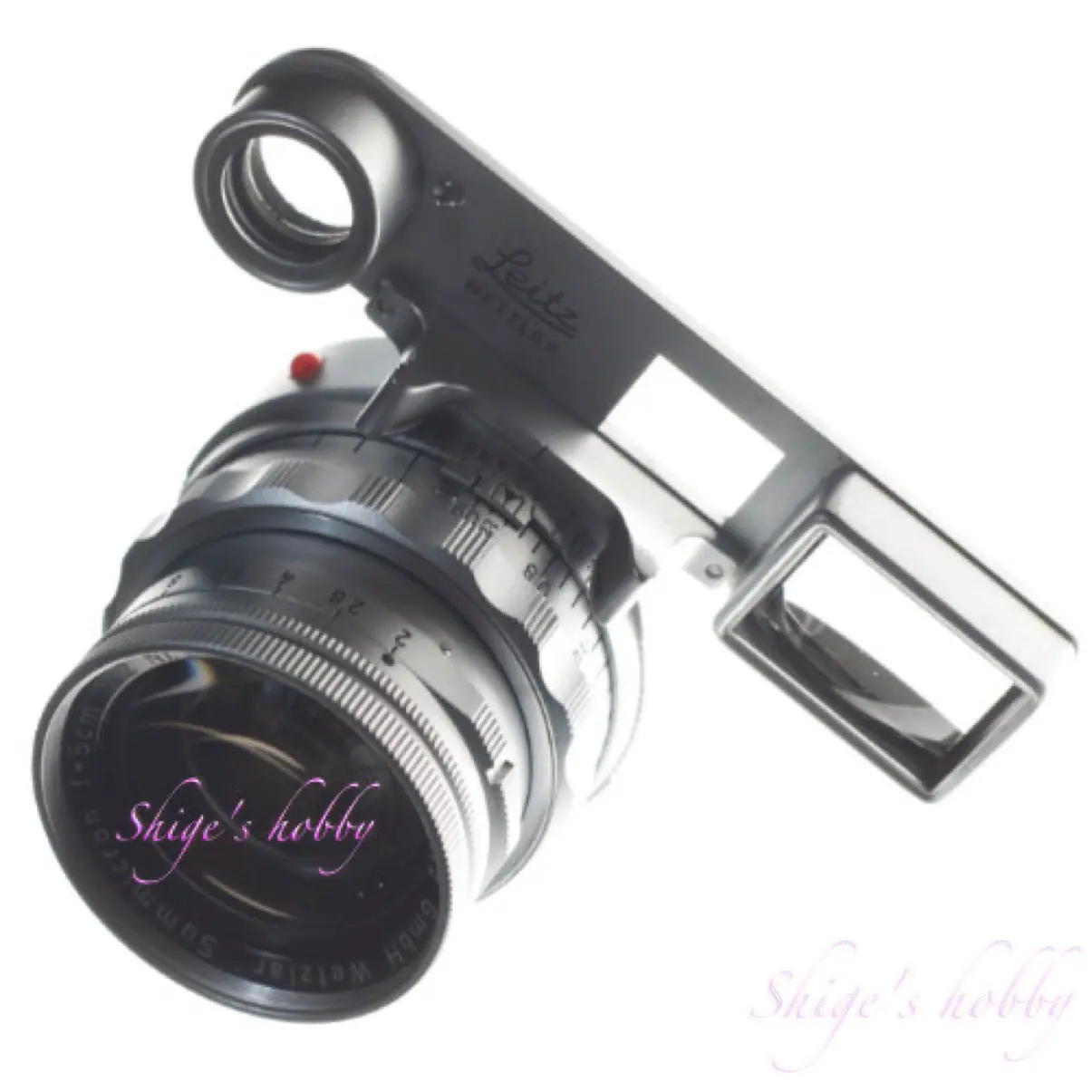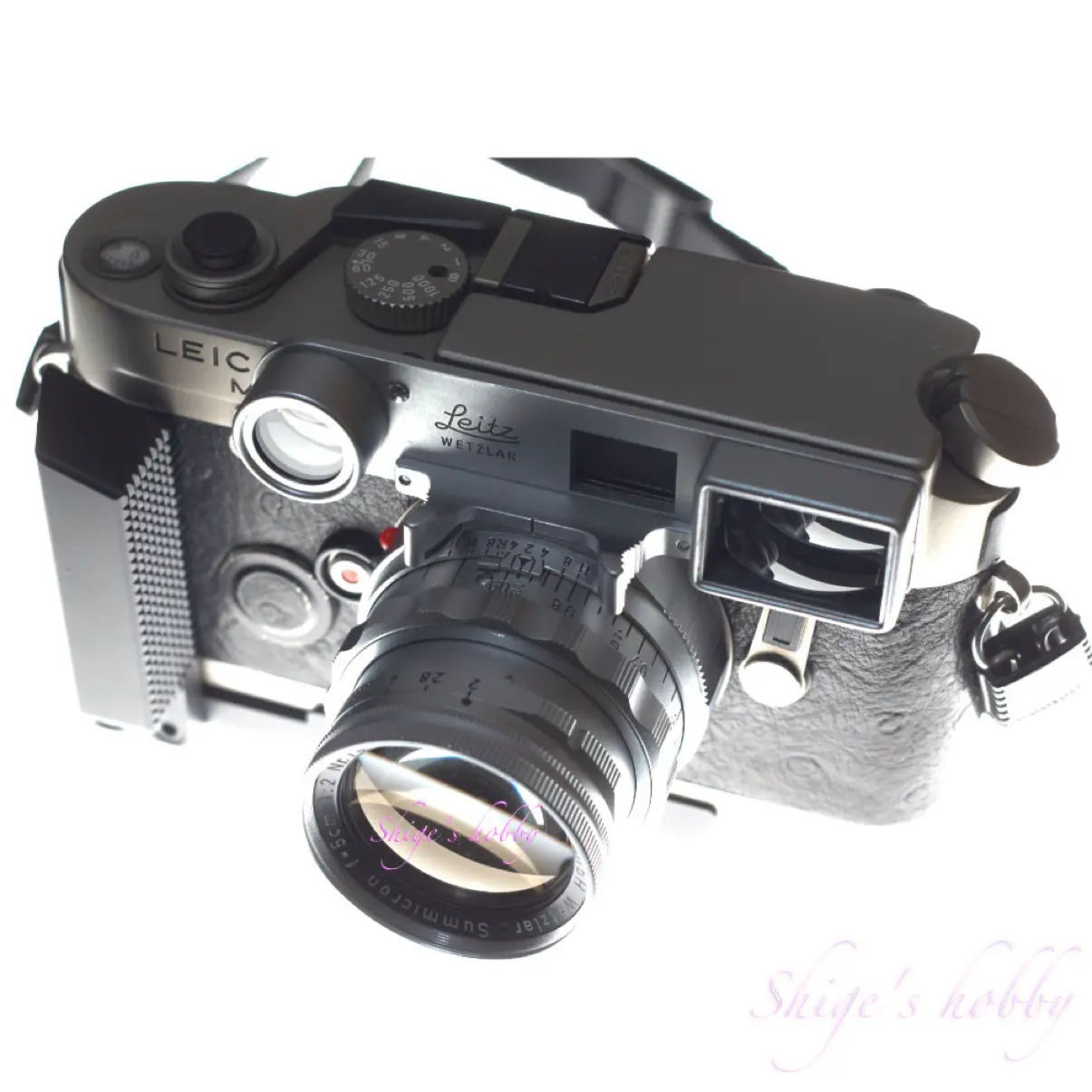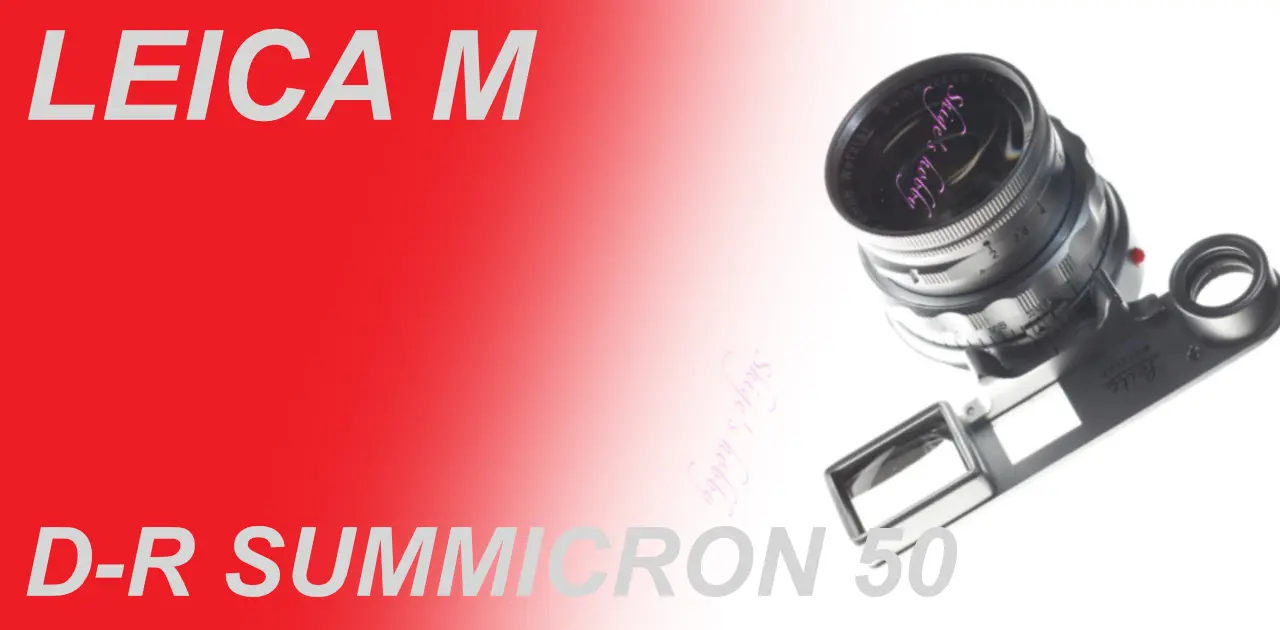Last updated on 2025-11-13
A review and sample photos of the LEICA DR SUMMICRON M 50mm F2 used with the film camera LEICA M6 and the mirrorless camera α NEX-5.
- Please see the disclaimer regarding advertising here.
- Italicized links in the text are advertisement links that take you to other sites.
Table of contents
Gallery
The following cameras were used to take the sample photos:
- LEICA M6 +KODAK E100VS +NIKON COOLSCAN-V
- SONY α NEX-5
Review


1.Overview
The DR SUMMICRON M 50mm F2 is a lens that enables close-up photography up to 0.48m when used with a close-up adapter. The mechanism is mechanical: when the eyeglasses are attached to the lens, a ball on the lens is pressed, allowing the helicoid to move to the close-up range. When the eyeglasses are removed from the lens, the lens focuses from infinity to 1m and operates like a regular lens.
The stopper on the eyeglasses is designed to match the 77mm height of M-type Leica cameras prior to the M6. Therefore, the eyeglasses cannot be attached to film cameras whose height was increased to 80mm with the addition of electronic components from the M6-TTL onwards, the 80mm Leica M-compatible Hexar RF, and digital M-type Leica cameras such as the LEICA M8, M8.2, M9, M10, and M typ240, due to the interference of the eyeglasses.
However, if the stopper is removed, the lens can be attached to the camera and used without any problems. We have confirmed that when the Summicron 35mm f/2 with the same eyeglasses was attached to these cameras, there were no problems with use due to the position of the eyeglasses, and we have found that lenses with eyeglasses can be used without any problems as long as they can be attached to these cameras.
This is why you may come across used DR Summicron lenses with eyeglasses attached that have had the eyeglass stoppers removed.
2.Usability
As you can see from the exterior photo, the DR Summicron M 50mm f/2 is a lens that comes with glasses, and the glasses part of the DR Summicron is removable, which sets it apart from other glasses-attached lenses.
There are also functional differences in the glasses: the 35mm lens with glasses is primarily intended to extend the M3’s 50mm viewfinder frame to 35mm, and its minimum focusing distance of 0.65m is roughly the same as the lens without glasses, so it is not intended for close-up photography.
The 135mm lens with glasses is intended to enlarge the small viewfinder frame for a focal length of 135mm, and does not improve close-up photography capabilities.
The DR Summicron’s depiction from 1m to infinity is the renowned 50mm Summicron, and parallax is unavoidable when shooting close-ups due to the mechanism, but when used with film, the results are not immediately visible, so looking at the developed photos doesn’t seem to deviate too much from the intended purpose. With digital rangefinder cameras, you can see the results in the preview, so if parallax is not an issue, it’s safer to use a mirrorless camera with an electronic viewfinder.
When I was using film cameras, I preferred using one because it allowed me to take close-up shots.
When attached to a camera, a lens with an electronic viewfinder spoils the lightness of a rangefinder camera, but it gives the camera a mechanical, heavy feel. With the grip and glasses attached, as shown in the photo above, the entire camera becomes quite heavy, and while it’s a bit uncomfortable to wear around your neck, it’s certainly noticeable.
I also used it with the NEX-5 mirrorless camera, and when using it with a mount adapter, the glasses became a nuisance. When shooting without the glasses, normal shooting from 1m to infinity is no problem, but for close-up shots, you need to change the lens mode to close-up mode and move the helicoid while pressing the ball at the connection between the lens and the glasses with your finger. This operation is quite tedious in the field.
To solve this problem, you can either leave your glasses on, even though it’s a bit of a hassle, or use a mount adapter with an auxiliary helicoid for close-up photography.
Regarding the use of the auxiliary helicoid, close-up photography with the DR-Summicron is achieved only by extending the helicoid, without moving the lens, so there’s no difference between using the auxiliary helicoid or using the lens’s close-up mode. And because mirrorless cameras allow you to set the focus position using the electronic viewfinder or rear LCD screen, you can capture images exactly as intended without being affected by parallax.
Regarding appearance and price, the silver chrome exterior of lenses from this era has a beautiful matte finish, perhaps due to the surface finish, unlike the smooth painted surfaces of modern lenses. The knurling on the focus ring is also intricately crafted, something you wouldn’t find on modern lenses, making it a lens that gives you great satisfaction in owning. Since many lenses were produced, there are many in good condition, so if you look around, you’re sure to find one that suits your needs.
Before 2010, lenses with glasses attached were sold at fairly low prices, but in the 2020s, prices have risen, just like other lenses.
As for using it with a digital M-series Leica, I had a lens with a glasses stopper, so I was hesitant to take the trouble to remove it, so I’ve never used a digital M camera.
Also, regarding the digital M-series Leica, the column THE MAP TIMES provided by Map Camera states that close-up photography is not possible with the digital M, and Leica Wiki states that the DR version cannot be used with the M8 or M9. I have not confirmed whether this statement is correct, or whether the glasses stopper or some other reason is the reason it cannot be attached.
3.Summary
In conclusion, to sum up the DR SUMMICRON M 50mm F2, it is a rare lens that can get as close as 0.48m for a rangefinder film camera. The focal length switching mechanism is also ingenious, making it a must-have lens for anyone who loves mechanics.
However, with mirrorless cameras, there are options for close-up shooting without using this close-up mechanism, so there is little need for it. I have heard that DR lenses have a high manufacturing quality, but I don’t know if that’s true.
Specifications, considerations, etc.
The first-generation Summicron came in two varieties: a retractable and a fixed barrel. The fixed barrel is available with or without glasses, meaning there are three different lens types. The lens configuration is the same for all lenses, with seven elements in six groups.
In “Leica Lenses of the World” (page 84) by Fumio Nakamura, the DR Summicron has the same lens configuration, but different lens elements.
The second-generation Summicron, from 1968 to 1979, had a lens configuration of six elements in five groups, but the third-generation Summicron from 1979 changed to a configuration of six elements in four groups, a configuration that continues to this day in the current product (2025), the Summicron 50mm f/2, with its built-in hood.
| Items | DR SUMMICRON | SUMMICRON |
| Focal length(mm) | 50 | 50 |
| Max aperture | 2 | 2 |
| Min aperture | 16 | 16 |
| Lens Construction | 7 elements in 6 groups | 6 elements in 4 groups |
| Aperture blades (Diaphragm) | 10 | 8 |
| Min distance(m) | ∞〜1.0 | ∞〜0.7 |
| With goggles(m) | 0.9〜0.48 | – |
| Lens length(mm) | 43 | |
| Max diameter(mm) | 53 | 53 |
| Filter Size(mm) | 39 | 39 |
| Hoods | SOOFM / ITDOO / IROOA | Build in |
| Weight(g) | 339 | 240:Black 335:Silver,Titan |
| Goggles weight(g) | 52 | – |
| Release date | 1956 | 1978 |
| Production numbers | ? | 1977-2005 94,573+ |
Reference links
- LEICA APO-SUMMICRON-M 50mm official page
- Description of SUMMICRON-M 50mm by LEICA Wiki
- “Leica Lenses of the World”・There is a description of DR-SUMMICRON on page 84・Ads by Amazon
Affiliate links
- Leica Lens・Ads by Amazon
- Leica Books・Ads by Amazon

Amazon Prime Sale
Update history
- 2025.10.19
- 2024.11.5
- 2024.02.20:Update article
- 2022.04.29:First draft



Be First to Comment